Tata Motors’ new electric arm, Tata.ev, launched the Tata Punch.ev in India and we drove it soon after. Here is what we think of the new compact electric SUV.
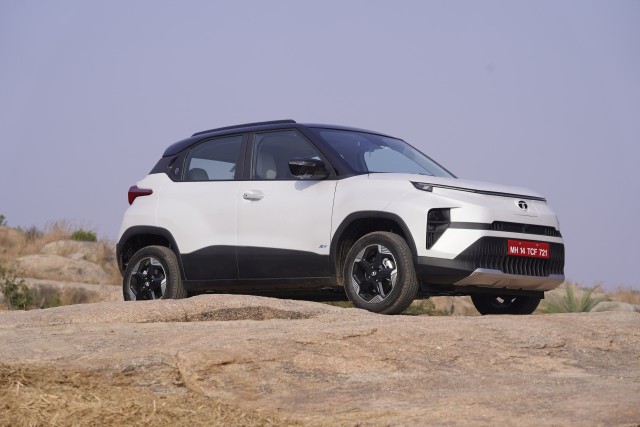
Story: Jim Gorde
Photography: Sanjay Raikar
It’s an exciting time at Tata Motors with new launches, new models in the pipeline, an all-new platform dedicated to electric cars, and a dedicated electric sub-brand and front to sell them from. There has been plenty of change at Tata Motors and the new Punch.ev is the first of the new lot. We were invited to Bengaluru to drive it.
The new Tata Punch.ev is based on the new all-electric “Acti.ev” platform (pronounced “active”) from Tata Motors and represents a paradigm shift for the home-grown band. The target customer base is essentially those who want a digital extension of their smart mobile phone that also enables them to be mobile. The aim is to enable the user to go beyond. Everyday. In comfort and safety without compromising on connectivity.
The Tata Punch.ev is designed to do just that. It was made to be versatile and multi-talented with the Acti.ev skateboard platform it is built upon enabling multiple body styles, variable battery cell mounting capability, and, thus, a variety of driving range options. The Punch.ev is offered in two guises, a standard range model with 25-kWh battery pack, 60-kW motor (82 hp and 114 Nm), and up to 315 kilometres of range and the Long Range (LR) model with a 35-kWh battery pack, 90-kW (122 hp and 190 Nm), and up to 421 km of range. The latter is the one we are driving.
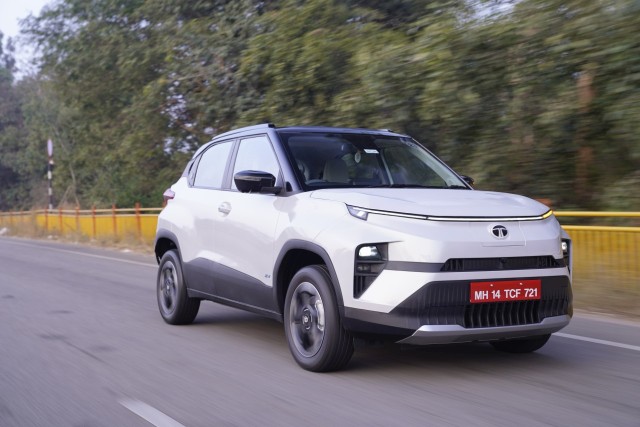
The Punch.ev is similar in size to its combustion-engine counterpart but measures 3,857 millimetres long and 1,633 mm high while retaining the same 2,445-mm wheelbase and 1,742-mm width. That makes the EV 30 mm longer and 18 mm taller. This is thanks to the new platform and makes it a slightly more accommodating car. There is a similar list of “personas” that make up the variant list, starting with the Smart, the Adventure, and the Empowered and Empowered+ which is the top spec. The Empowered versions get 16-inch wheels with 195/60 rubber, while the LR models get disc brakes front and rear. Let’s get to the car at hand.
The Punch.ev “Empowered+ S LR ACFC”, as Tata list it, includes the optional sunroof (Rs 50,000) and the 7.2-kW AC fast-charger (another Rs 50k), taking the total cost to Rs 15.49 lakh (ex-showroom). That may sound steep for a less than sub-four-metre car, but could it actually be good value in this day and age?
Now, I have been openly critical of previous Tata Motors offerings mostly because I believe that they could do much better, especially when it comes to the cabin ergonomics and quality of materials. The Nexon may be popular but I found it to be an ergonomic disaster with counter-intuitive and haphazard placement of several “features” seemingly for the sole purpose of inclusion. Thus, when I walked out of the Bengaluru airport, I was looking forward to a positive change; hoping that one of the leading car-makers and, in fact, an indigenous car-maker no less, got their act together and their priorities straight. Have they? You bet!
The Punch.ev looks cool. It has all the necessary elements to make it stand out of the crowd, from a dynamic LED daytime light signature to the light bar running across the front, plus projector headlights and fog-lights with equally distinct three-pointed LED tail-lights with inner and outer elements, and they’ve added an emergency brake light warning as well. The smooth lines and compact size make it as much an approachable car as they make it a head-turner.
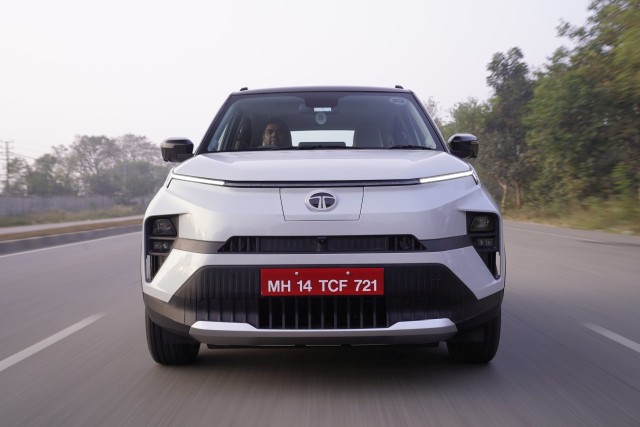
Inside, there are more reasons to be happy. There is a smart key with push-button access and start. The doors, as is customary, open 90 degrees wide, thus making ingress and egress easier. The simple but clean theme inside the cabin and layout, including the two 10.25-inch displays—one each for the centre touchscreen and the driver information unit behind the steering wheel—as well as the climate control panel and its mix of physical and digital all look purposeful and in place.
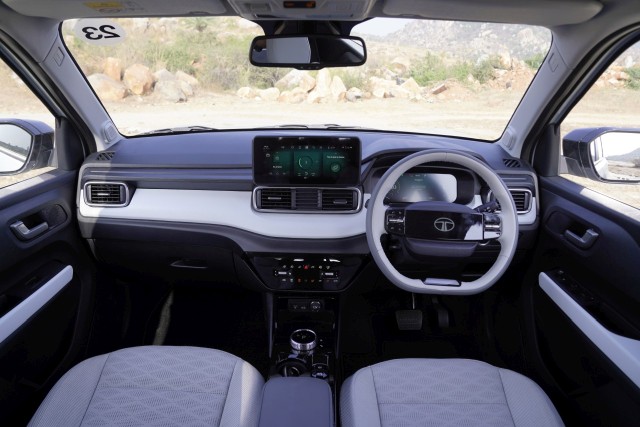
Settle in and the quality of materials from the plastics to the lining, upholstery, and padding is evidently nicer and they feel both good and durable. The ergonomics are good, too, and controls fall into place well. Apart from the door-lock button in the centre, whose use is eliminated thanks to a very convenient push/pull inner door lock lever on the doors, and the seat-mounted ventilation controls out of sight on the side, everything from the wing-mirror controls, centre arm-rest, and what not are all where one would expect them to be. Even those two are not deal-breakers; just things that take a little time getting used to. There is adequate room for front occupants but the rear can get a little cramped, especially for large occupants. The boot offers a useful 366 litres of volume with an organiser for the jack, tool-kit, and spare wheel below the load floor. There is also a 14-litre front trunk (or “frunk”) under the bonnet.
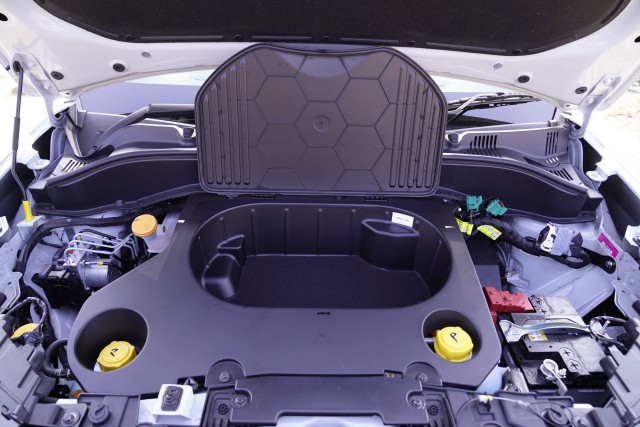
Among the notable features are the standard six airbags across the line-up and ISOFIX child-seat anchors, besides more features in higher variants including wireless Android Auto and Apple CarPlay, a digital cockpit, a 360° surround camera with 2D and 3D views, a blind-spot view monitor linked to the turn-indicators, and the Arcade.ev app suite which brings all popular apps for music, games, and entertainment. Also, there are four voice assistants: “Hey, Tata”, Alexa, Siri, and Google Assistant. Location sharing by what3words and ZConnect is standard.
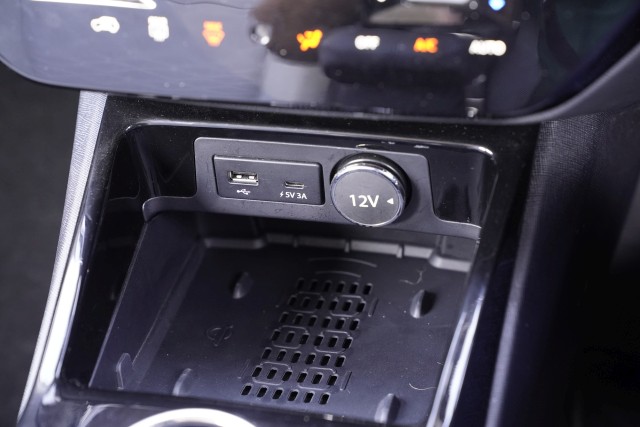
This Punch.ev on the go is quiet, refined, and rides well. While the Smart and Adventure derivatives ride on 15-inch wheels with 185/70 rubber, the Empowered versions have 16-inch wheels with 195/60 low rolling-resistance tyres. The 90-kW motor is good for 122 hp and 190 Nm of peak torque. A single-speed transmission sends the power to the front wheels. This one is good for a sprint from standstill to 100 km/h in a claimed 9.5 seconds and a top speed limited to 140 km/h. And that’s not even the best part.
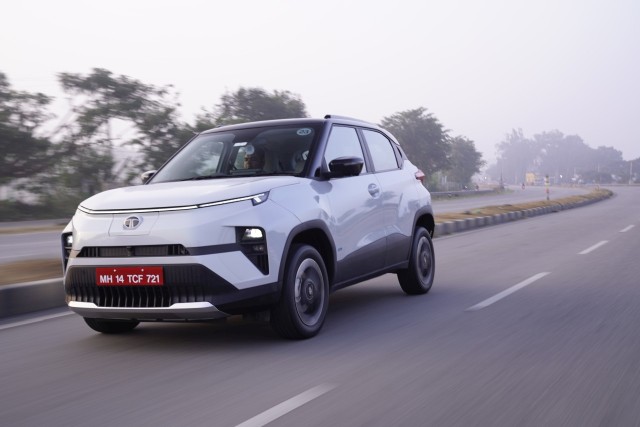
The Punch.ev has a nicely calibrated steering feel and an excellent ride quality. The suspension and damping are well sorted and offer commendable handling and driving dynamics. It managed to put a smile on my face after only a short while behind the wheel. Furthermore, the drive modes—Eco, City, and Sport—also add to the experience. The Eco mode clamps down on throttle (by-wire) input, limiting it to an indicated maximum of 50 per cent (on the charge/power display on the left side) even with the pedal pushed flat. “City” is the most usable and has good response and is the mode that I used for the most part. “Sport” sharpens up responses and makes for even quicker acceleration with just a far lesser demanding dab on the right pedal. Forget 0-100 km/h. The most essential is the 30-80 km/h dash. And the Punch.ev is quick! The instant torque makes for blistering acceleration for a car of its size and 80 km/h comes up in just a few seconds.
One downside of “Sport” mode is the faster chewing through the charge. I’d started the day with a range of 333 km. Tap the AC button and it loses 15 km in a nanosecond. Select “Eco” and it rises by 10. Select “Sport” and tap AC and 333 turned to 285. Just like that. Of course, there are three levels of brake energy regeneration, plus a level zero or off mode. These are activated via paddles on either side of the steering wheel. It matters where the car is being driven and how many people or bags (weight) the car has to deal with. If travelling light on a cool day on a route which has more downhill sections, there will be more energy recuperated and a real world range of about 400 km may be expected. If it’s a full load and an uphill journey through slow-moving or stop-go traffic on a hot day, expect no more than 250 km. Yes, there are many variables.
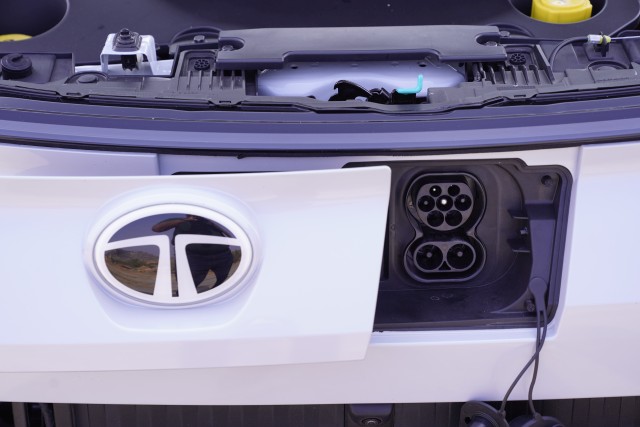
Thanks to the regen modes, one-pedal driving is entirely possible. However, in more urgent situations necessitating immediate stopping, the brakes do a good job, offering nice bite and feedback while slowing down the car in a drama-free manner. One negative is the response of the drive selector. The round knob has a half-second delay when switching among Drive (D), Neutral (N), and, crucially, Reverse (R). Turn it too quickly and, with a lack of click feedback, it moves to Park (P) which engages the power parking brake (electric hand brake). Thankfully, it has a drive-away release; however, the extra energy used to get going eats into the essential charge level. That niggle apart, overall, I am happy to say that the on-road performance is a high point.
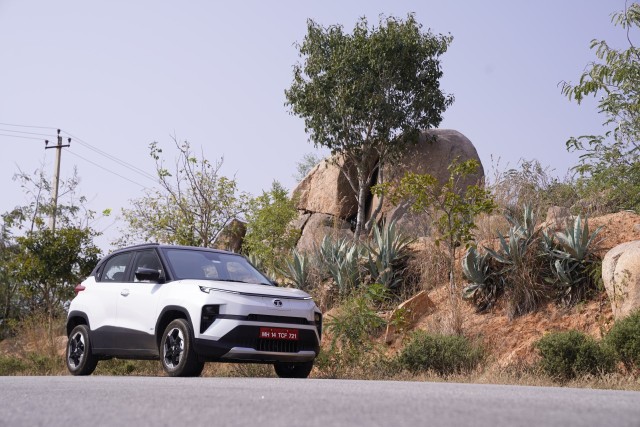
If you are wondering what it’s like when the going gets tough, the Punch.ev offers a good 190 mm of ground clearance, apart from a 19° approach angle, 15.1° ramp breakover angle, and 28° departure angle. It can also wade through 350 mm of water and handle its fair share of steep grades and side slopes. In fact, Tata had arranged an “urban off-road course” to demonstrate just how those aspects make it a better car for the demanding urban driving conditions. This comprised a slalom, a deep trench with water, some rock steps taking it 10 or 12 feet above ground, plus chicken-holes and an articulation section. The Punch.ev aced those, if only losing traction twice on the rock steps. However, staying cool and collected can help when dealing with difficult situations. Besides, it also allowed me to experience just how tough and well-built the car is and how much punishment it can take and just get on with the job at hand. I must say I was very impressed.
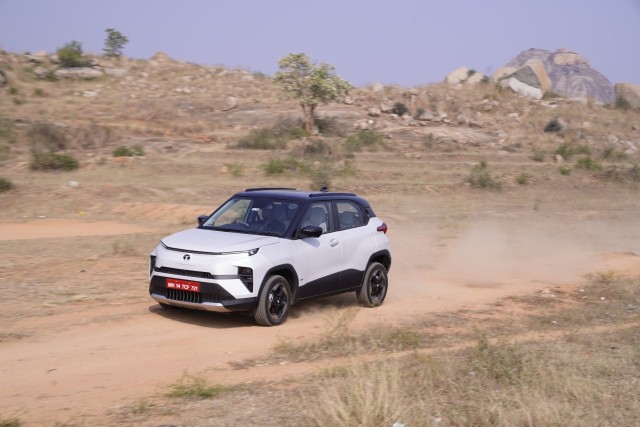
The Punch line starts at Rs 11 lakh (for the Smart) and goes up to Rs 15.49 lakh for this Empowered+ Long Range with Sunroof and 7.2-kW AC Fast-charging, both prices ex-showroom. It seems to be a smart buy for those looking for a convenient car to get about the city or around it calmly and quietly, with no tail-pipe emissions. The Punch.ev is a compact and usable everyday car that is nice to drive and certainly punches above its weight where equipment and features are concerned. Good job, Tata.ev!
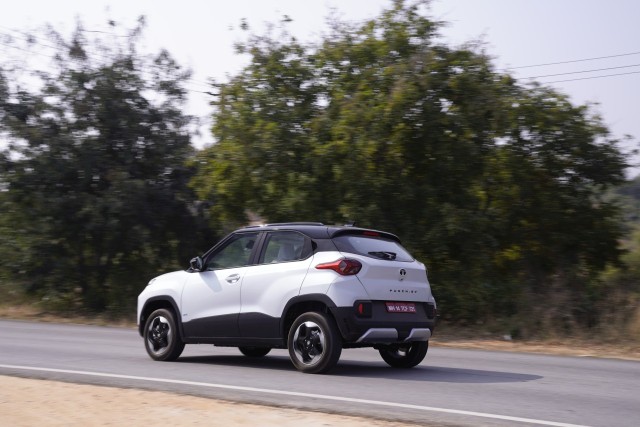
Need to Know – Tata Punch.ev Empowered+ S LR ACFC
Price: Rs 15.49 lakh (ex-showroom)
Battery Pack: 35-kWh, lithium-ion
E-motor: 90-kW, permanent magnet synchronous
Max Power: 122 hp
Max Torque: 190 Nm
Transmission: Single-speed automatic, front-wheel drive
Suspension: MacPherson strut front, twist beam rear
Weight: 1,300 kg (estimated)




















Leave a Reply